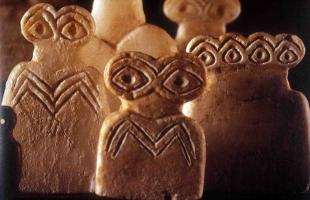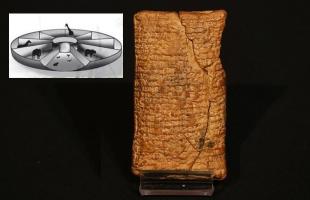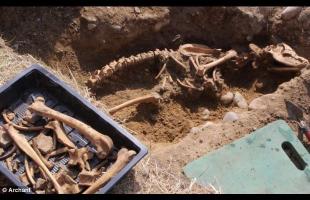Copy Link
Add to Bookmark
Report
dictyNews Volume 25 Number 13

dictyNews
Electronic Edition
Volume 25, number 13
December 1, 2005
Please submit abstracts of your papers as soon as they have been
accepted for publication by sending them to dicty@northwestern.edu
or by using the form at
http://dictybase.org/db/cgi-bin/dictyBase/abstract_submit.
Back issues of dictyNews, the Dicty Reference database and other
useful information is available at dictyBase - http://dictybase.org.
=============
Abstracts
=============
Use of a Penetratin-linked peptide in Dictyostelium.
J Ryves and A. Harwood
Cardiff School of Biosciences, Biomedical Sciences Building,
Museum Avenue, PO box 911, Cardiff, CF10 3US, Wales, UK
Molecular Biotechnology, in press
The plasma membrane is an effective barrier to most macromolecules and
hydrophilic molecules. Remarkably, a class of positively charged cell
penetrating peptides (CPPs) has been discovered that can translocate
themselves and associated cargoes into the cytoplasm. These have been
used to carry oligopeptide and oligonucleotide based inhibitors into
mammalian cells. A recent report indicates that the same CPPs are
internalized by plant protoplasts suggesting this may be a universal
phenomenon. We report here that the prototypical CPP, penetratin, enters
cells of the free-living amoebae Dictyostelium discoideum. To investigate
the functionality of this technology we fused the penetratin sequence to
PKI, a peptide inhibitor of the cAMP dependent protein kinase (PKA).
Consistent with its PKA inhibitory action, Penetratin-PKI blocked
aggregation in wild type cells and at appropriate concentrations rescued the
phenotype of a Dictyostelium mutant which has constitutively high PKA
activity. This technology offers an effective method for delivery of
oligopeptides and oligonucleotides into Dictyostelium.
Submitted by: Jonathan Ryves [ryveswj@cf.ac.uk]
-----------------------------------------------------------------------------
PI3 Kinase Activity Controls the Chemoattractant-Mediated
Activation and Adaptation of Adenylyl Cyclase
Frank I. Comer 1,2 and Carole A. Parent 1
1. Laboratory of Cellular and Molecular Biology Center for Cancer Research,
NCI, NIH
2. PRAT Research Fellowship Program, NIGMS, NIH
Molecular Biology of the Cell, In press
published November 2, 2005 as 10.1091/mbc.E05-08-0781
The binding of chemoattractants to cognate G protein-coupled receptors
activates a variety of signaling cascades that provide spatial and temporal
cues required for chemotaxis. When subjected to uniform stimulation, these
responses are transient, showing an initial peak of activation followed by a
period of adaptation, in which activity subsides even in the presence of
stimulus. A tightly regulated balance between receptor-mediated stimulatory
and inhibitory pathways controls the kinetics of activation and subsequent
adaptation. In Dictyostelium, the adenylyl cyclase ACA, which synthesizes
the chemoattractant cAMP, is essential to relay the signal to neighboring
cells. Here we report that cells lacking PI3K activity are deficient in
signal relay. In LY294002-treated cells this defect is due to loss of ACA
activation. In contrast, in cells lacking PI3K1 and PI3K2, the signal relay
defect is due to loss of ACA adaptation. We propose that residual low levels
of 3-phosphoinositides in pi3k1-/2- cells is sufficient to generate the
initial peak of ACA activity, yet is insufficient to sustain the inhibitory
phase required for its adaptation. Thus, PI3K activity is poised to
regulate both ACA activation and adaptation, thereby providing a link to
ensure the proper balance of counteracting signals required to maintain
optimal chemoresponsiveness.
Submitted by: Frank Comer [comerf@helix.nih.gov]
-----------------------------------------------------------------------------
Identification and Purification of a DNA-Binding Protein Interacting with
the Promoter of 5’-nucleotidase in Dictyostelium discoideum.
Natasha S. Wiles, Can M. Eristi, Bradley R. Joyce, and
Charles L. Rutherford.
Department of Biological Sciences, Virginia Tech, Blacksburg, VA 24061,
United States.
Arch. Biochem. Biophys., in press
The developmental management of 5’-nucleotidase (5nt) expression in
Dictyostelium discoideum has provided a focal point for studies of gene
regulation at the level of transcription. To identify DNA-protein
interactions involved in the 5nt regulation, EMSAs were performed using
short oligonucleotides, designed to span a 357 bp promoter region. A
binding activity (Rf = 0.33) was identified and shown to be specific to
the nucleotide sequence between -338 and -309 bp relative the 5nt ATG.
Characterization of the binding activity, including the effects of salt and
temperature, provided insight into the nature and stability of the protein.
The protein was purified in a series of chromatographic stages, including
DEAE Sephacel, Heparin Sepharose, DNA affinity and gel filtration. SDS-PAGE
analysis identified a polypeptide with a molecular weight of 70 kDa. Mass
spectrometry revealed that the purified protein was a putative
formyltetrahydrofolate synthase.
Submitted by: Charles Rutherford [rutherfo@vt.edu]
-----------------------------------------------------------------------------
Functional genomics in Dictyostelium: MidA, a novel conserved protein is
required for mitochondrial function and development
Patricia Torija, Juan J. Vicente, Tiago B. Rodrigues, Alicia Robles,
Sebastián Cerdán, Leandro Sastre, Rosa M. Calvo and Ricardo Escalante
Instituto de Investigaciones Biomédicas Alberto Sols. C.S.I.C./U.A.M.,
Calle Arturo Duperier 4, 28029 Madrid. Spain.
Journal of Cell Science, in press
Genomic sequencing has revealed a large number of evolutionary conserved
genes of unknown function. In the absence of characterized functional
domains, the discovery of the role of these genes must rely on experimental
approaches. We have selected 30 Dictyostelium genes of unknown function that
showed high similarity to uncharacterized human genes and were absent in the
complete proteomes from S.cerevisiae and S. pombe. No putative functional
motifs were found in their predicted encoded proteins. Eighteen genes were
successfully knocked out and 3 of them showed obvious phenotypes. A detailed
analysis of one of them, midA, is presented in this report. Disruption of
midA in Dictyostelium leads to pleiotropic defects. Cell size, growth rate,
phagocytosis and macropinocytosis were affected in the mutant. During
development, midA- cells showed an enhanced tendency to remain at the slug
stage and spore viability was compromised. The expression of MidA fused to
GFP in midA- strain rescued the phenotype and the fused protein was located
in the mitochondria. Although cell oxygen consumption, mitochondrial content
and mitochondrial membrane potential were similar to wild type, the amount
of ATP was significantly reduced in the mutant suggesting a mitochondrial
dysfunction. Metabolomic analysis by natural-abundance 13C-Nuclear Magnetic
Resonance has shown the lack of glycogen accumulation during growth. During
starvation, mutant cells accumulated higher levels of ammonia that inhibited
normal development. We hypothesize that the lack of MidA reduces
mitochondrial ATP synthetic capacity and this has an impact in some but not
all energy-dependent cellular processes. This work exemplifies the potential
of Dictyostelium as a model system for functional genomic studies.
Submitted by: Ricardo Escalante [rescalante@iib.uam.es]
-----------------------------------------------------------------------------
Contractile ring-independent localization of DdINCENP, a protein important
for spindle stability and cytokinesis
Qian Chen, Hui Li, and Arturo De Lozanne
Institute of Cellular and Molecular Biology, and Molecular and Cellular and
Developmental Biology Department, University of Texas at Austin, Austin,
TX, 78712
Molecular Biology of the Cell, in press
Dictyostelium DdINCENP is a chromosomal passenger protein associated with
centromeres, the spindle midzone and poles during mitosis and the cleavage
furrow during cytokinesis. Disruption of the single DdINCENP gene revealed
important roles for this protein in mitosis and cytokinesis. DdINCENP null
cells lack a robust spindle midzone and are hypersensitive to microtubule
depolymerizing drugs suggesting that their spindles may not be stable.
Furthermore DdCP224, a protein homologous to the microtubule-stabilizing
protein TOGp/XMAP215, was absent from the spindle midzone of DdINCENP null
cells. Overexpression of DdCP224 rescued the weak spindle midzone defect of
DdINCENP null cells. While not required for the localization of the
myosin II contractile ring and subsequent formation of a cleavage furrow,
DdINCENP is important for the abscission of daughter cells at the end of
cytokinesis. Finally, we show that the localization of DdINCENP at the
cleavage furrow is modulated by myosin II but it occurs by a mechanism
different from that controlling the formation of the contractile ring.
Submitted by: Arturo De Lozanne [a.delozanne@mail.utexas.edu]
-----------------------------------------------------------------------------
Dictyostleium discoideum to human cells: Pharmacogenetic studies demonstrate
a role for sphingolipids in chemoresistance
Stephen Alexander, Junxia Min and Hannah Alexander, Division of Biological
Sciences, University of Missouri, Columbia, MO 65211-7400
BBA-Reviews, General subjects, in press
Resistance to chemotherapy is a major obstacle for the treatment of cancer
and a subject of extensive research. Numerous mechanisms of drug resistance
have been proposed, and they differ for different drugs. Nevertheless, it
is clear that our understanding of this important problem is still
incomplete, and that new targets for modulating therapy still await
discovery. The attractive biology and the availability of powerful
molecular techniques have made the cellular slime mold Dictyostelium
discoideum a powerful non-mammalian model for drug target discovery, and
the problem of drug resistance. To understand the molecular basis of
chemoresistance to the widely used drug cisplatin, both genetic and
pharmacological approaches have been applied to this versatile experimental
system. These studies have resulted in the identification of novel
molecular pathways which can be used to increase the efficacy of cisplatin,
and brought attention to the role of sphingolipids in mediating the cellular
response to chemotherapeutic drugs. In the following review we will
describe the history and utility of D. discoideum in pharmacogenetics,
and discuss recent studies which focus attention on the role of
sphingolipids in chemotherapy and chemoresistance.
Submitted by: Hannah Alexander [alexanderh@missouri.edu]
==============================================================================
[End dictyNews, volume 25, number 13] 




















